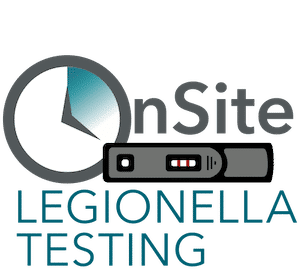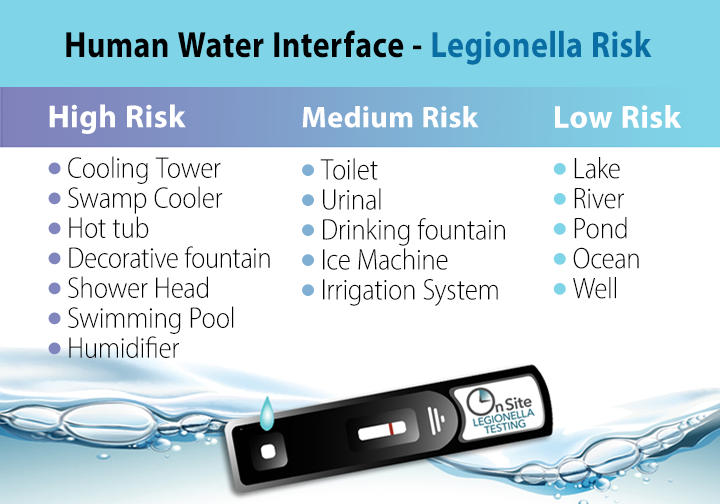#1 in a 10-part series
By Grant Newhouse – On Site Legionella Testing
grant@onsitelegionellatesting.com | (925) 320-3555
By now you probably know about 7.15 million waterborne illnesses occur annually, resulting in 601,000 emergency room visits, 118,000 hospitalizations, 6,630 deaths. Waterborne illnesses cause $3.33 billion in direct healthcare costs. Most hospitalizations and deaths are caused by biofilm-associated pathogens (nontuberculous mycobacteria, Pseudomonas, Legionella), costing US $2.39 billion annually. In the case of legionella, the death rate is about 10% or 10 – 20x that of Covid 19.
Legionella is transmitted via inhalation of water droplets. This makes the understanding of human water interfaces a key to Legionella control and prevention.
- A human water interface (HWI) is any place where humans contact water. With this knowledge in place it is key to further understand all HWI’s do not present an equal risk when it comes to Legionella:
Low Risk – HWI
- Lake
- River
- Pond
- Ocean
- Well
Medium Risk – HWI
- Toilet
- Urinal
- Drinking fountain
- Ice Machine
- Irrigation System
High Risk – HWI
- Cooling Tower
- Swamp Cooler
- Hot tub
- Decorative fountain
- Shower Head
- Swimming Pool
- Humidifier
- An increase in Legionella has to do with 3 key factors:
- How well the HWI is maintained with regard to biocide / biological population.
- How well the system is in control of biofilms and deposits.
- The potential of the system to generate aerosols that are likely to be inhaled.
- In order to minimize risk of Legionella outbreak, those who own, operate, maintain systems must:
- Maintain the system in such a way that it is free of deposits, corrosion and biofilm.
- Inspect, clean and disinfect the various system components on annual basis.
- Establish and execute a formal, written Water Plan which includes:
- Inspection, Sampling and Testing
- Cleaning, Disinfection and Treatment
- Communication and Training to ensure all stakeholders are well informed.
- Sampling and testing for general biological population (and Legionella specifically) per the Water Plan using on site testing capability – capable of giving results in < 30 minutes
- Send positive samples to an off-site and independent lab for confirmation.
- Significant cost and legal risk to organizations who fail to properly understand and control Legionella, including damage to:
- Employee health and safety
- System operational efficiency
- Total cost of operation
- Loss of goodwill / public image
This series will be published weekly and will examine topics A – C in the order presented above, in greater detail, with the stated goals of raising awareness of Legionella challenges and reducing its impact in the 2022 season. For more information please call Grant, or visit our website at www.onsitelegionellatesting.com.

